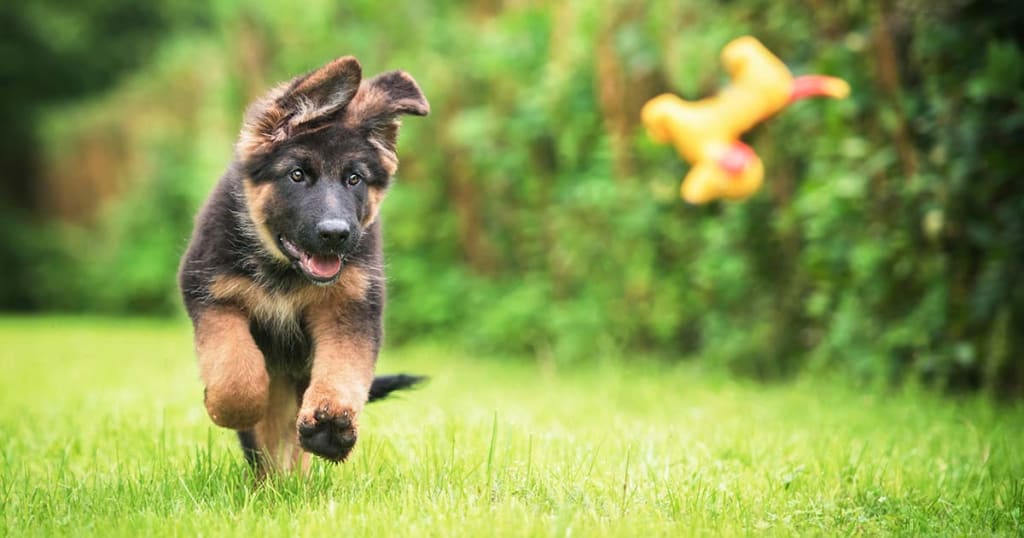How to Train Your Puppy Without Losing Your Sanity
Are you the proud new owner of a puppy? Congratulations! Training your puppy can be a fun and rewarding experience for both you and your furry friend

How to Train Your Puppy Without Losing Your Sanity
Are you the proud new owner of a puppy? Congratulations! Training your puppy can be a fun and rewarding experience for both you and your furry friend, but it can also be overwhelming and exhausting if you don’t know what you’re doing. Don’t worry, we’re here to help. In this blog post, we’ll provide you with some tried-and-true tips and advice on how to train your puppy without losing your sanity. Click Here For More
Start with the basics
Training a puppy can be overwhelming and frustrating for many owners, but it doesn’t have to be. To get off on the right paw, start with basic training that establishes your pup’s boundaries.
Begin by teaching your puppy their name and how to respond when you call it. Get down on their level and use a happy, encouraging tone of voice. Offer treats as rewards when they come to you or when they understand something new.
Next, work on getting them used to being handled by gently touching them in different areas and giving them positive reinforcement in the form of treats or verbal praise. This will help them feel secure and more comfortable when you need to handle them for grooming, vet visits, etc.
Once your pup is comfortable with their name and being handled, you can start teaching the basic commands like sit, stay, come, and down. Start off by praising them anytime they do something right or come close to doing the command correctly. You can also lure them into position with treats. Don’t forget to reward them with treats or verbal praise every time they succeed.
These basic commands are important for ensuring your pup is safe, obedient, and well-behaved. With patience and consistency, you’ll soon have a happy, well-trained pup!
Find a routine that works for you
Establishing a routine for your puppy is essential for successful training. It will help your puppy understand the expectations and boundaries you have set. In order to find a routine that works for you, start by asking yourself a few questions:
- How much time do I have available to dedicate to training my puppy?
- What activities can I incorporate into the routine?
- How can I stay consistent with my puppy’s training?
By answering these questions, you can begin to create a training routine that is suitable for both you and your puppy. A typical puppy training routine should involve potty breaks, playtime, obedience training, and rewards. Each of these activities will help to reinforce the training that your puppy is receiving.
For potty breaks, take your puppy outside every two to three hours or after he wakes up from a nap or plays. When your puppy begins to eliminate outside, reward him with praise or a treat.
During playtime, allow your puppy to explore and learn in a safe environment. Incorporate obedience commands during this time as well as introduce new commands and tricks. This will help keep your pup engaged and excited about learning.
When it comes to obedience training, begin with basic commands such as sit, stay, come, and heel. Start slowly and use positive reinforcement techniques such as rewards and praise to encourage your puppy’s progress. As he becomes more comfortable with the commands, increase the difficulty level and add distractions.
Lastly, be sure to reward your puppy for his successes. Treats, playtime, and verbal praise are all great ways to reward your pup for good behavior. Doing so will encourage him to continue his progress and will help build a strong bond between you and your puppy.
Creating a routine that works for both you and your puppy is essential for successful training. By taking the time to establish a routine, you will be able to ensure that your pup learns effectively and efficiently.
Use positive reinforcement
Positive reinforcement is one of the most effective techniques for training your puppy. This involves rewarding desirable behavior with treats, verbal praise or physical affection. Your pup will learn faster when they understand that good behavior will be rewarded.
When training your pup, always reward them immediately after they perform a desired action. It helps them to understand what behavior you are looking for. For example, if you want your pup to sit, give them a treat and verbal praise the moment their bottom touches the ground.
When rewarding your pup, don’t give them too many treats. Too much sugar can lead to weight gain and health problems. Instead, use verbal praise or physical affection to show your pup how proud you are of them.
Never reward bad behavior. If your pup does something wrong, don’t give them attention or treats. They’ll learn that this type of behavior gets them rewards and will continue doing it. Instead, simply ignore the behavior and wait for them to do something good before rewarding them.
Positive reinforcement is a great way to train your puppy without resorting to punishment. With patience and consistency, you can use this method to teach your pup the rules and behaviors you want them to have.
Avoid punishment
Punishing your puppy can be an easy habit to fall into, but it’s not the best way to train your pup. Punishment can have lasting negative consequences and lead to fear and aggression in your pup. Instead of punishing your puppy, focus on positive reinforcement. Reward your pup with treats or verbal praise when they do something right, and ignore them or redirect them when they do something wrong.
When training your puppy, it’s important to remember that puppies are still learning. They don’t understand why they’re being punished and it can damage their relationship with you. Be patient and consistent with your pup, and soon enough you’ll both be much happier for it.
About the Creator
Car Community
high quality car stories , everything you should know about every car ever made.






Comments
Car Community is not accepting comments at the moment
Want to show your support? Send them a one-off tip.